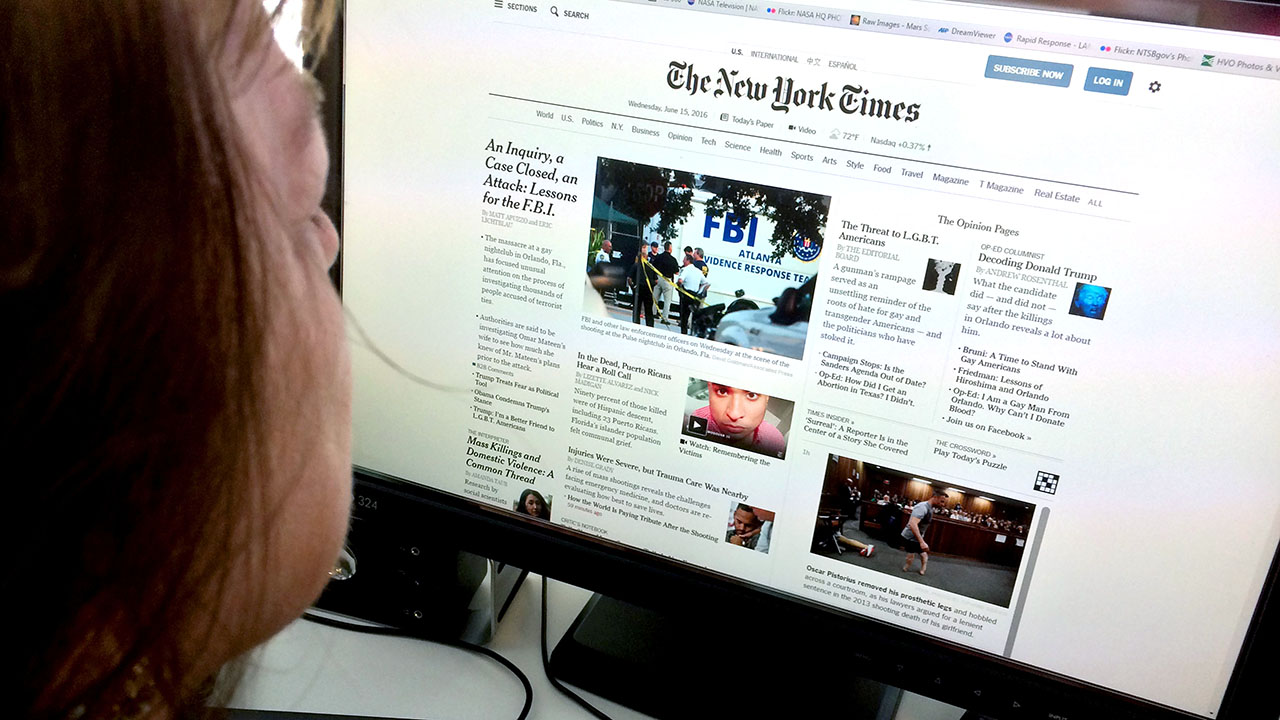Comprehensive Globe News Coverage with DW News Daily
Comprehensive Globe News Coverage with DW News Daily
Blog Article
The Development of Journalism in the Age of Information Online
In the swiftly transforming landscape of journalism, the digital age has actually ushered in a brand-new era where the immediacy of on-line news improves both its creation and usage. As electronic platforms multiply, they enhance interactivity and expand the reach of journalism, yet concurrently challenge standard standards with the swift spread of info and false information alike. The rise of resident reporters and independent voices even more makes complex the narrative, adding to a vibrant yet precarious media ecological community. As we navigate these complexities, one have to question the future of journalistic honesty and how it can be safeguarded in the middle of these transformative adjustments.

Rise of Digital Information Operatings Systems
The rise of electronic information platforms has basically transformed the landscape of journalism, marking a change from typical print media to dynamic, on the internet rooms. This development was thrust by developments in modern technology and the increasing availability of the net, which allowed news to be shared rapidly and extensively. Unlike their print equivalents, electronic systems can immediately update material, giving real-time news coverage and analysis that attract the modern visitor's need for immediacy and importance.
Digital systems have actually also widened the scope of journalism, allowing a diversification of viewpoints and voices. With lower barriers to entrance, independent journalists and smaller wire service can reach worldwide target markets, challenging the monopoly when held by established media corporations. This democratization of information has actually enhanced the public discourse, providing varied narratives and catering to specific niche rate of interests that were formerly underserved.
Additionally, the assimilation of multimedia components such as video clip, audio, and interactive graphics improves narration, making information more appealing and available (dw news). This multimedia approach not just brings in a wider target market but likewise help in the understanding of intricate tales. Essentially, digital platforms have actually redefined journalism, cultivating technology and adaptability in an ever-evolving media environment

Influence of Social Media Site
Social media platforms have better changed journalism by changing how information is taken in and shared. Additionally, social media has expanded audiences, providing journalists accessibility to international viewership past geographical constraints.

The interactive nature of social media fosters interaction, permitting audiences to take part in conversations, share point of views, and add to information narratives. This communication improves the dynamic in between journalists and their target markets, promoting a much more participatory form of journalism. Nonetheless, this also positions immense stress on journalists to generate content that reverberates with audiences, usually focusing on sensationalism to capture interest.
In addition, social media platforms have come to be vital tools for journalists to resource tales, determine public point of view, and network with industry peers. The reliance on social media also requires a vital analysis of resources to ensure the reliability of info shared.
Difficulties of Misinformation
In the middle of the electronic transformation of journalism, one considerable difficulty is the prevalent spread of misinformation. In an age where information is rapidly available and plentiful, comparing legitimate information and fabricated content has become increasingly difficult. The large quantity of info distributed across numerous on-line systems typically blurs the line in between reality and fiction, presenting a considerable risk to the integrity of journalism.
False information can spread out quickly through social media, where formulas prioritize engagement over accuracy, inadvertently intensifying incorrect narratives (dw news). This not just weakens public count on media institutions yet likewise fosters a setting where misleading content can influence popular opinion and decision-making processes. The challenge for reporters is twofold: to debunk falsehoods successfully and to promote extensive standards of fact-checking and confirmation
More complicating this concern is the presence of deepfakes helpful resources and innovative disinformation campaigns that utilize advanced technologies to develop misleading material indistinguishable from reputable reporting. As these innovations evolve, so need to the tools and approaches employed by journalists to battle them. Addressing false information calls for partnership between media companies, technology companies, and policymakers to develop thorough techniques that guard the authenticity of info in the electronic age.
Duty of Citizen Journalists
Browsing the landscape of false information highlights the transformative influence of resident journalists within the electronic realm. As typical media electrical outlets face the large rate and quantity of news dissemination online, citizen journalists-- common people armed with smart devices and access to social media-- are playing a progressively critical role. These grassroots factors have actually become instrumental in covering occasions quickly, frequently supplying real-time updates from the ground prior to mainstream media can respond.
Citizen journalists have democratized news coverage, intensifying voices that could or else continue to be unheard. By leveraging systems like Twitter, Facebook, and Instagram, they offer varied perspectives that test the narratives frequently pushed by established media. This democratization, nevertheless, additionally provides difficulties. The absence of formal training or content oversight can result in the spread of unproven information, making complex efforts to identify truth from fiction.
However, person journalism is reshaping the media landscape, compelling traditional electrical outlets to adjust by incorporating user-generated web content into their coverage. By promoting community involvement and motivating participatory journalism, these digital authors add to a much more dynamic and comprehensive information environment. As resident reporters remain to develop, their these details duty in forming public discourse continues to be a necessary element of modern journalism.

Future of Journalistic Stability
The spreading of digital systems has actually democratized details dissemination, enabling a broader variety of voices to add to the news landscape. This has actually also led to the spread of false information and the erosion of trust fund in media.
The rise of expert system and algorithm-driven material curation better complicates the landscape. While AI can boost coverage by examining vast datasets and recognizing trends, it likewise poses risks of predisposition and adjustment. Reporters should therefore remain attentive, guaranteeing that modern technology works as a tool for fact rather than distortion.
In addition, the monetary pressures on typical media outlets demand innovative organization designs to maintain high quality journalism. Subscription-based models, not-for-profit funding, and collaborations with technology companies are becoming potential remedies. Yet, they should be gone after without jeopardizing content independence.
Inevitably, the future of journalistic integrity relies on the commitment of reporters and media companies to copyright transparency, liability, and an unfaltering devotion to truth, among a swiftly changing electronic globe.
Conclusion
The development of journalism in the electronic age offers both opportunities and challenges. The increase of electronic news platforms and social networks has actually democratized details dissemination, equipping a varied range of voices, consisting of person reporters. Nevertheless, these innovations necessitate cautious efforts to fight misinformation and maintain journalistic stability. The future of journalism depends upon the capacity to adjust innovative company designs that maintain high quality reporting while maintaining the reputation and trust vital for notified public discussion.
The surge of digital information platforms has basically transformed the landscape of journalism, marking a change from traditional print media to dynamic, on the internet areas. With lower barriers to access, independent reporters and smaller sized information organizations can get to international target markets, testing the monopoly once held by established media corporations.Social media platforms have further revolutionized journalism by modifying just how news is consumed and shared. As traditional media outlets grapple with the large speed and volume of news dissemination online, person journalists-- common individuals equipped with smart devices and access to social media-- are playing an increasingly critical role. The surge of digital news click this site systems and social media has equalized information circulation, equipping a diverse selection of voices, including person journalists.
Report this page